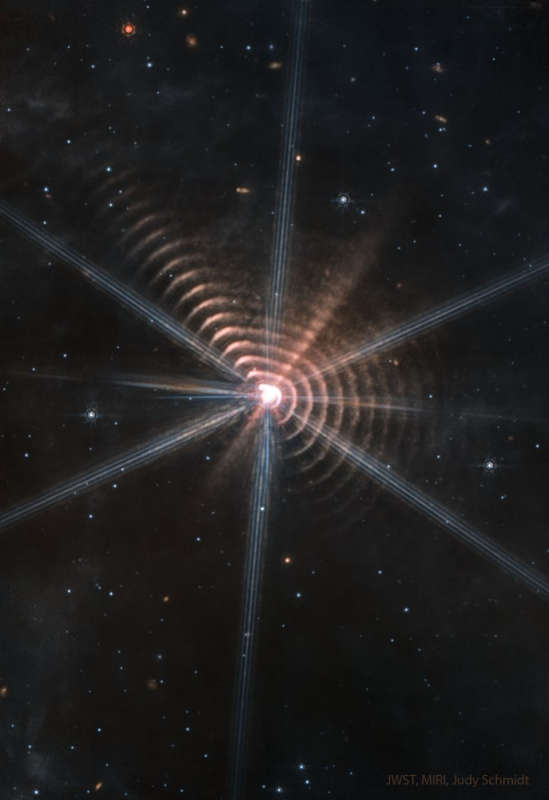Dust Shells around WR 140 from Webb

Explanation:
What are those strange rings?
Rich in dust, the rings are likely 3D shells --
but
how they were created remains a topic of research.
Where they were created is well known: in a
binary star system that lies about 6,000
light years
away toward the
constellation of the Swan (Cygnus) --
a system dominated by the Wolf-Rayet star
WR 140.
Wolf-Rayet stars are massive, bright, and known for their
tumultuous winds.
They are also known for creating and dispersing heavy
elements such as
carbon
which is a building block of interstellar
dust.
The other star in the
binary is also bright and massive -- but
not
as active.
The two
great
stars
joust in an oblong orbit as they approach each other about every eight years.
When at closest approach, the
X-ray
emission from the system increases, as, apparently,
does the dust expelled into space -- creating
another shell.
The featured infrared
image
by the new
Webb Space Telescope resolves
greater details and
more dust shells than ever before.
Authors & editors:
Robert Nemiroff
(MTU) &
Jerry Bonnell
(USRA)
NASA Web Site Statements, Warnings,
and Disclaimers
NASA Official: Jay Norris.
Specific
rights apply.
A service of:
LHEA at
NASA /
GSFC
& Michigan Tech. U.

